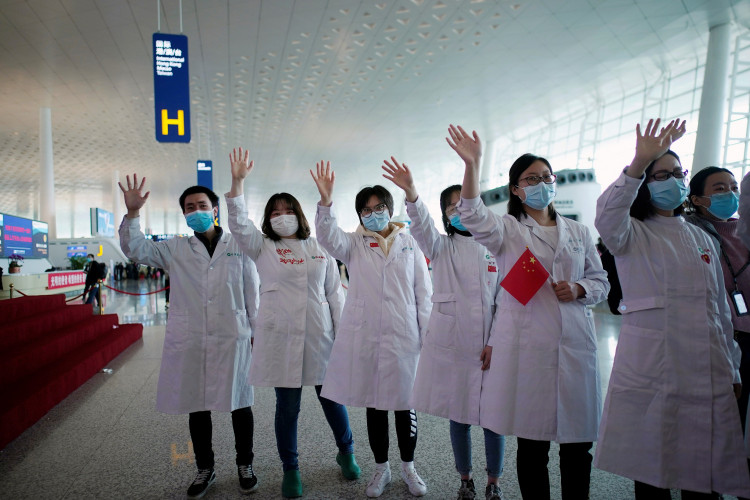Seven clinical trials now simultaneously underway intend to determine if remdesivir -- the only COVID-19 drug cure currently being tested at this stage -- is safe and effective in treating this highly-contagious disease ravaging more than 200 countries and territories worldwide.
Daniel O'Day, Chairman & CEO, Gilead Sciences, Inc., the California biotech firm that developed remdesivir, said each of these trials was set-up with unprecedented speed thanks to the remarkable efforts of various groups involved.
The first two trials were held in China in early February for patients with severe and moderate symptoms of the disease. Five more trials have gone online around the world since this time, said O'Day.
He said two Phase 3 studies are being run by Gilead in the United States, Asia and Europe. These locations have a high prevalence of COVID-19. One trial involves patients with severe disease. The other is studying remdesivir in patients with more moderate symptoms.
A key question these studies aim to answer is if remdesivir's treatment duration can be shortened from 10 days to 5 days. The U.S National Institute of Allergy and Infectious Disease (NIAID) began a global trial on February 21.
This trial randomly assigns patients to treatment with either remdesivir or with a placebo to enable a controlled comparison of outcomes. It enrolled 800 patients with a broad spectrum of symptoms.
The World Health Organization (WHO) is also conducting a global trial. There is also the Solidarity and the Inserm DisCoVeRy trial that recently began in Europe.
"We know that there is tremendous interest around when the data from these trials will be available and what they will tell us about remdesivir," said O'Day. "We feel the urgency as we wait for the science to speak. We are working with intense speed to determine whether remdesivir could be an option and we are committed to sharing information when it becomes available to us."
He said Gilead Sciences expects to have preliminary data from the study of remdesivir in severe patients at the end of April. O'Day's announcement follows news remdesivir continues to show promise as a clinical cure for COVID-19.
A study published Friday in The New England Journal of Medicine (NEJM) revealed significant clinical improvements in 36 of 53 patients given remdesivir. These patients were all infected by SARS-CoV-2 (severe acute respiratory syndrome coronavirus 2), the virus that causes COVID-19.
Gilead Sciences said the 53 international patients were hospitalized with severe complications arising from COVID-19. The company also said most of these patients demonstrated no new safety issues with the remdesivir treatment.
The study shows doctors were able to reduce the amount of oxygen support needed in 68% of these COVID-19 patients (or 36 out of 53) over a median follow-up of 18 days from the first dose of remdesivir. More importantly, 17 of 30 patients on ventilators were able to come off of these life-saving machines. Nearly two thirds of patients (64% or 34 out of 53) were on mechanical ventilation.
This finding is important because COVID-19 patients on ventilators appear more likely to suffer long-term health consequences. The chance of these patients dying also increases the longer they stay attached to these mechanical breathers.
New York Gov. Andrew Cuomo, whose state is the hardest hit by COVID-19, famously said if a person goes on a ventilator "there is roughly only a 20% chance that you will come off the ventilator."
Seventeen out of 54 patients (57%) on mechanical ventilation were extubated after the remdesivir treatment, and nearly while 25 out of 54 (47%) were discharged from the hospital following treatment with remdesivir.
After 28 days of follow-up, the cumulative incidence of clinical improvement was 84%, according to a Kaplan-Meier analysis. Clinical improvement in this instance is defined as discharge from the hospital and/or at least a two-point improvement from baseline on a predefined six-point scale.
On the other hand, clinical improvement was less frequent among patients on invasive ventilation versus noninvasive ventilation, and among patients at least 70 years of age.






